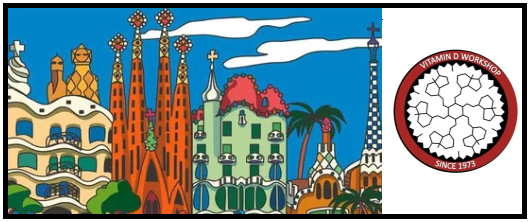Beneficial Effects of Paricalcitol in a setting of cardiac dysfunction induced by transverse aortic constriction in mice

| AUTHORS | |
| JOURNAL | 2018 International congress on vitamin D, Barcelona Spain |
| Heart failure (HF) is a major cause of morbidity and mortality. In various forms of HF, excessive cardiac workload leads to enlargement of the heart in an effort to manage increased hemodynamic demand. Although the increased heart size is a compensatory mechanism, sustained overload can ultimately lead to ventricular dilatation and a decline in left ventricular (LV) function. Furthermore, several K+ currents are down regulated during adverse ventricular remodelling, contributing to repolarization abnormalities and the occurrence of ventricular malignant arrhythmias. Experimental evidence exists that vitamin D exerts protective effects in the heart, but the mechanisms underlying these beneficial effects are poorly understood. We used an experimental model of cardiac hypertrophy and HF by transverse aortic constriction (TAC) in the mouse to test the effects of vitamin D. Four weeks after TAC, mice were treated i.p. with the vitamin D analogue paricalcitol (PC) (300ng/kg/day) or vehicle, 3 times weekly during 5 weeks. LV structure and function were evaluated by magnetic resonance imaging (MRI) 9 weeks after TAC. Subsequently, mice were sacrificed and ventricular myocytes were isolated to record outward K+ currents (Itof, IKur and Iss) using the patch-clamp technique. MRI showed that TAC significantly increased LV mass, LV end diastolic (LVEDV) and systolic volume (LVESV), and decreased ejection fraction (EF). PC treatment significantly reversed LV mass and volumes (LVmass: sham 81.8±2.2mg; TAC 125.5±6.9mg; TAC+PC 103.1±15.5mg; LVEDV: sham 41.6±2.2μl, TAC 61.6±3.6μl, TAC+PC 45.7±4.6μl; LVESV: sham 11.6±1.4μl, TAC 38.9±4.7μl, TAC+PC 22.9±4.7μl) and improved EF (sham 72.8±1.9%,TAC 38.0±4.0%,TAC+PC 52.1±5.6%). Electrophysiological study showed that TAC induced a significant reduction in K+ currents. PC treatment rescued Itof and Ikur downregulation but not Iss to levels similar to those in sham mice (Itof: sham 14.7±1.4 pA/pF, TAC 8.3±1.2 pA/pF, TAC+PC 14.1±2.2 pA/pF; Ikur: sham 17.9±2.8 pA/pF, TAC 8.1±1.2 pA/pF, TAC+PC 12.6±2.0 pA/pF; Iss: sham 9.6±0.6 pA/pF, TAC 6.4±0.6 pA/pF, TAC+PC 7.7±0.8 pA/pF). Thus, PC treatment has beneficial effects on HF by improving cardiac function and reversing LV remodelling, both at structural and cellular levels, by reducing LV mass and volumes and normalizing K+ currents. |
|
| LINK |



